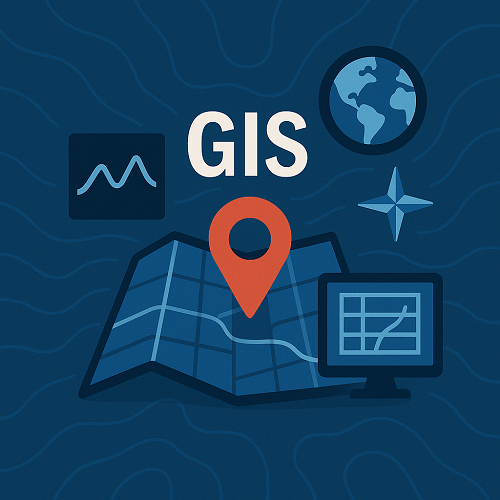TL;DR
- ArcGIS Online introduces new tools for smarter, user-friendly mapping experiences.
- AI integration is redefining how analysts interact with complex spatial data.
- Real-time geospatial applications now support live decision-making across sectors.
- Businesses leverage automation for faster geoprocessing and predictive mapping.
- Organizations are prioritizing interoperability and cloud-native GIS solutions.
What’s New Right Now
Geospatial technologies continue to evolve rapidly. In early 2025, ArcGIS Online received major updates aimed at enhancing usability and collaboration. New AI-driven data handling tools make mapping and analysis more intuitive, enabling users to extract insights from large geospatial datasets with minimal coding.
Further, real-time data integration now extends beyond environmental monitoring into logistics, energy management, and urban mobility. Platforms like QGIS and cloud-based APIs are embracing AI-based data classification to improve the accuracy of automated spatial analysis.
Why It Matters
GIS advancements are not just technical milestones—they’re changing how organizations operate. Businesses gain competitive advantages through faster insights, predictive maintenance planning, and service optimization. For technologists, the fusion of GIS and AI means reduced manual data cleaning, simplified visualization pipelines, and seamless integration across distributed systems.
These innovations align GIS closely with digital transformation goals in sectors like retail, energy, and public safety. Ultimately, modern GIS tools convert spatial information into actionable intelligence at unprecedented speed.
The Evolution of GIS Capabilities
1. AI-Powered Spatial Analysis
Machine learning models now automate feature extraction from satellite imagery, identify anomalies, and enable natural language queries for spatial search. With AI, users can ask questions such as “Which districts show vegetation loss this quarter?” and receive immediate mapped results.
2. Real-Time Collaboration and Data Streams
Real-time GIS workflows leverage streaming data from sensors, drones, and IoT devices, allowing users to monitor changes as they occur. Such dynamic systems support large-scale operations—like emergency response or autonomous vehicle routing—with significant accuracy.
3. Cloud-Native Integration
Cloud-based GIS is now central to scalability and team-based analysis. Services from Google Cloud and AWS Location Service support flexible architectures and advanced security for global organizations.
Comparison: Past vs. Emerging GIS Trends
| Feature | Traditional GIS | Modern GIS (2025) |
|---|---|---|
| Data Processing | Manual, desktop-based | Automated with AI and cloud pipelines |
| Collaboration | Local file sharing | Real-time cloud collaboration |
| Analysis Speed | Minutes to hours | Seconds with real-time streaming |
| Accessibility | Specialists only | Accessible via AI chat and dashboards |
| Integration | Limited APIs | Full cross-platform integrations |
Mini Case Study: Smart City Flood Resilience Program
Problem: A coastal city faced recurring flash floods with minimal forecasting capacity. Existing GIS maps were static, and emergency response was delayed by hours.
Approach: The city integrated real-time IoT sensors into its GIS platform and deployed AI models to simulate flood spread under varying rainfall scenarios. Using predictive dashboards, teams accessed up-to-date situational data through ArcGIS Online and automated workflows connected directly to field crews.
Outcome: Response times improved by 48%, early warning accuracy increased by 35%, and resource allocation became predictive instead of reactive. The program demonstrated how real-time GIS analytics turn data into measurable community resilience.
Implementation Checklist
- Identify key spatial datasets and integrate them with a cloud GIS environment.
- Leverage AI tools for data cleaning, classification, and object recognition.
- Establish real-time data feeds from IoT devices, satellites, or existing APIs.
- Enable accessibility through dashboards for decision-makers and analysts.
- Monitor system performance and continually update predictive models.
- Train teams on security, compliance, and best practices for spatial data handling.
FAQs
1. What is driving GIS innovation in 2025?
AI integration, increased cloud adoption, and the demand for real-time insights are the primary forces pushing GIS forward.
2. How does AI improve geospatial data handling?
AI automates pattern detection, anomaly identification, and text-based queries, making spatial data interpretation more accessible.
3. Are real-time GIS tools expensive to implement?
Costs vary, but cloud-based subscription models have lowered entry barriers, enabling even mid-size organizations to benefit.
4. What industries gain the most from modern GIS?
Utilities, transportation, retail, and environmental agencies gain significant efficiency and forecasting improvements.
5. Can GIS systems integrate with existing business intelligence (BI) tools?
Yes. Major platforms support APIs for Power BI, Tableau, and other analytics systems to create unified decision dashboards.
6. How should data security be maintained in cloud GIS setups?
Adopting encryption, role-based access control, and regular vulnerability assessments helps secure spatial data assets.
Conclusion
Geospatial Information Systems are evolving from static mapping to intelligent, continuously updating platforms that interpret the world in real time. As AI and cloud technologies mature, GIS will remain essential for data-driven planning and sustainability initiatives worldwide. To learn more or explore our GIS services, reach out to our team today.
